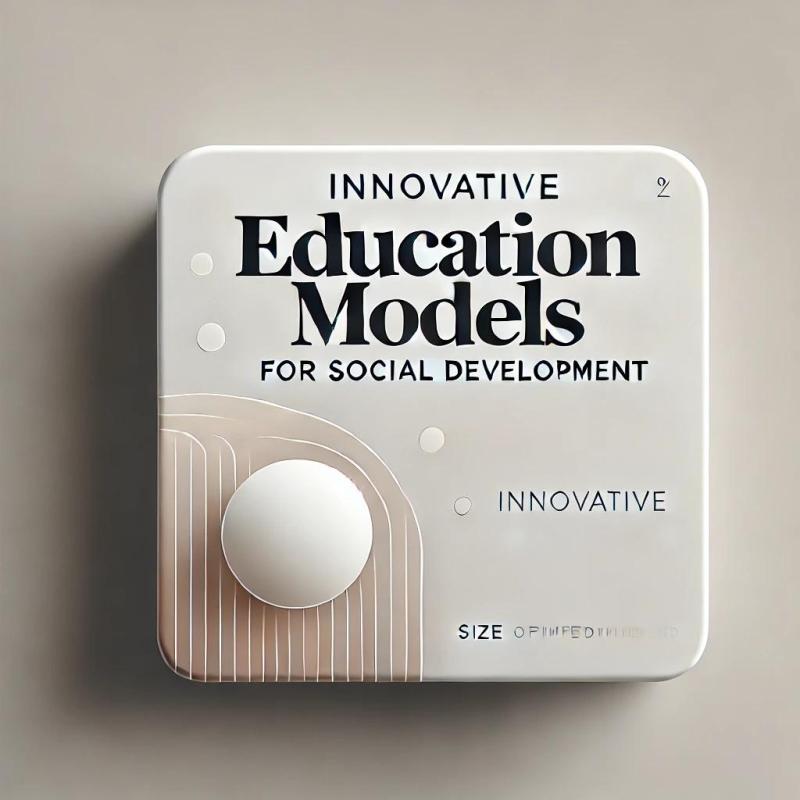Innovative Education Models for Social Development

Education is a catalyst for social development, offering pathways out of poverty, fostering critical thinking, and equipping individuals with skills to lead and innovate. In recent years, various innovative educational models have emerged, particularly aimed at empowering under-resourced communities. These models are transforming traditional approaches to education, making learning more accessible, relevant, and impactful for communities worldwide.
1. The Holistic Approach to Education
One of the most effective and widely adopted models for social development is the holistic approach. This model focuses on developing students' academic, emotional, social, and physical well-being, preparing them to become well-rounded individuals.
By addressing students' needs beyond academics, this approach empowers them to engage more meaningfully with their communities. Many organizations and schools worldwide, including Christel House, have implemented holistic education to address barriers such as health, nutrition, and mental well-being that often impede a child's ability to learn and succeed.
2. Experiential Learning Models
Experiential learning models, where students learn through real-life experiences and active engagement, have gained popularity. This approach allows students to connect classroom knowledge with practical applications, encouraging problem-solving, creativity, and teamwork.
In under-resourced communities, experiential learning can be transformative. Projects focused on environmental conservation, community service, or entrepreneurship teach students valuable skills that extend beyond the classroom and prepare them for real-world challenges. This model also emphasizes "learning by doing," fostering confidence and practical knowledge in students.
3. Digital and Blended Learning Platforms
The advent of digital technology has revolutionized education, making quality resources accessible even in remote areas. Digital and blended learning platforms combine online resources with traditional classroom methods, expanding students’ access to diverse educational content.
In developing regions, these platforms can help bridge the gap between urban and rural education standards. Mobile learning initiatives, for example, deliver lessons directly to students’ phones, providing education in areas with limited school infrastructure. This model not only broadens access but also introduces digital literacy, an essential skill for the modern workforce.
4. Community-Centered Education
Community-centered education brings the classroom into the community and leverages local knowledge and culture. In this model, community members are directly involved in the education process, acting as mentors, facilitators, or teachers.
This approach is particularly valuable in rural and indigenous communities, where standard education models may overlook cultural values and local needs. By including the community in education, students gain a sense of pride and identity, which helps them develop a stronger connection to their surroundings and a better understanding of how they can contribute to local social and economic development.
5. Project-Based Learning (PBL)
Project-Based Learning (PBL) involves students in hands-on projects that require them to solve real-life problems. PBL encourages critical thinking, collaboration, and creativity as students work through challenges relevant to their communities.
For example, in a project to improve access to clean water, students might research local water sources, develop a filtration solution, and educate the community about water conservation. This approach equips students with problem-solving skills and instills a sense of responsibility toward social improvement.
6. The Inclusive Classroom Model
The inclusive classroom model promotes equity by accommodating diverse learning needs, including students with disabilities. This model focuses on creating supportive environments where all students, regardless of their abilities or backgrounds, can succeed.
Inclusive education has gained traction globally, recognizing that every child has a right to quality education. It helps break down social barriers, fostering a culture of respect, acceptance, and diversity within the classroom and beyond.
7. STEAM Education
STEAM (Science, Technology, Engineering, Arts, and Mathematics) education is an innovative model that combines technical knowledge with creativity. Unlike traditional STEM education, STEAM incorporates the arts, encouraging students to think outside the box.
In under-resourced communities, STEAM education can be transformative, preparing students for careers in high-demand fields and fostering innovation that addresses local issues. This approach equips students with essential skills like critical thinking, adaptability, and creative problem-solving.
FAQs
What is a holistic education model?
The holistic education model addresses all aspects of a student’s well-being, including academic, social, emotional, and physical needs. It aims to develop well-rounded individuals ready to contribute to society.
How does experiential learning benefit students?
Experiential learning offers hands-on, real-world experience, helping students understand and apply their knowledge in practical ways. It enhances problem-solving skills, creativity, and teamwork.
What is blended learning?
Blended learning combines online and in-person instruction, offering students flexible access to quality resources. It is especially beneficial in areas with limited access to traditional schools.
Why is community-centered education important?
Community-centered education respects and incorporates local knowledge, culture, and values. It strengthens students’ connection to their heritage and empowers them to contribute to their community’s development.
What does an inclusive classroom model look like?
An inclusive classroom accommodates diverse learning needs, creating an environment where students of all abilities feel supported and valued. It promotes equity, respect, and understanding.
How does STEAM education differ from STEM?
STEAM education includes the arts alongside science, technology, engineering, and mathematics, fostering creativity and innovation. It prepares students for versatile careers and encourages creative problem-solving.
Post Your Ad Here

Comments